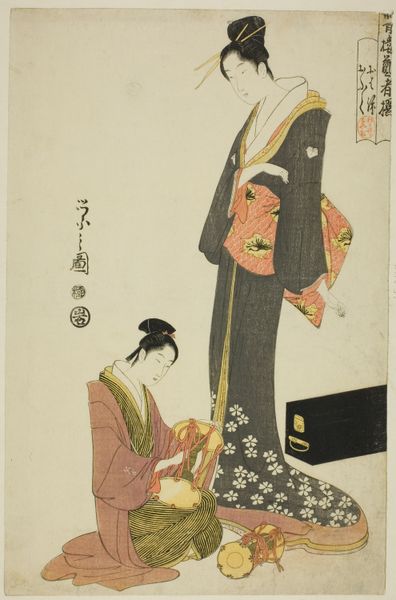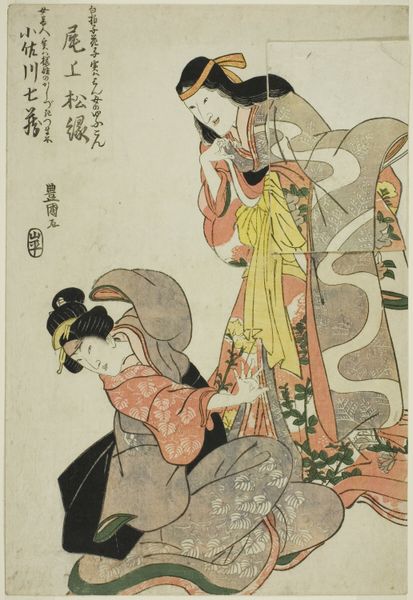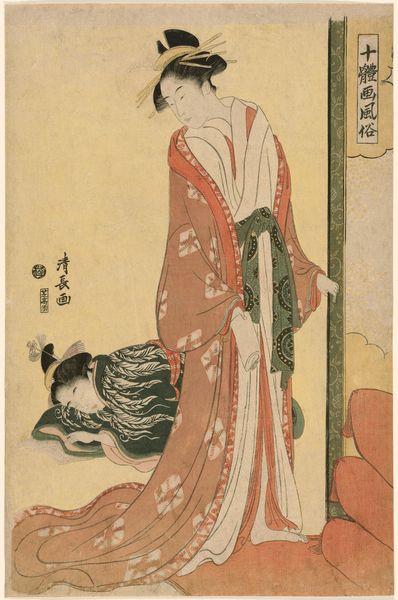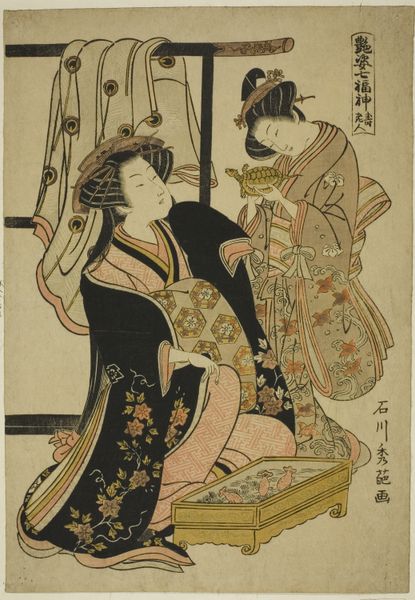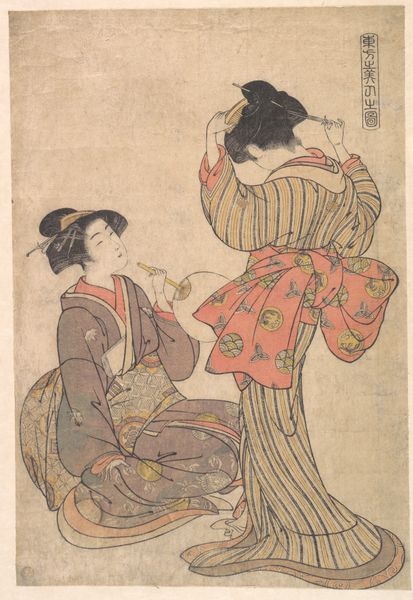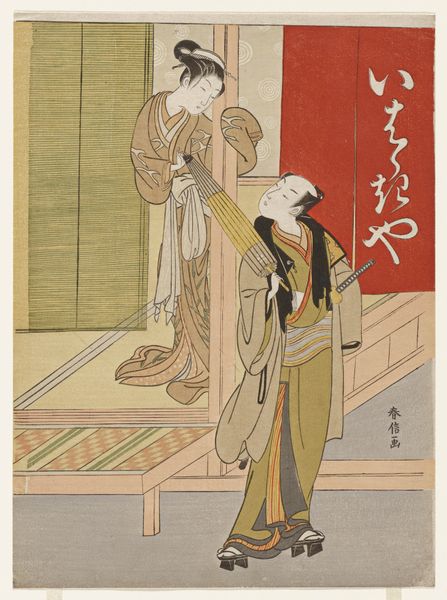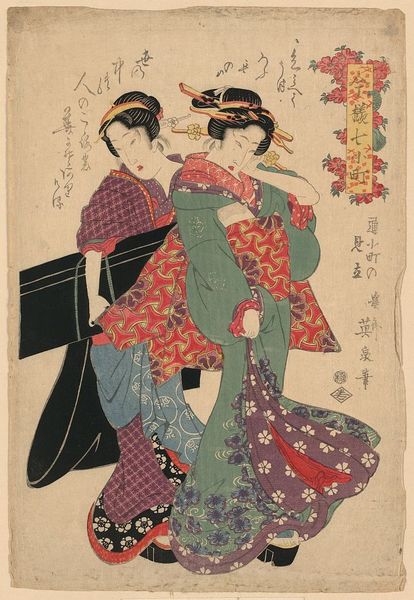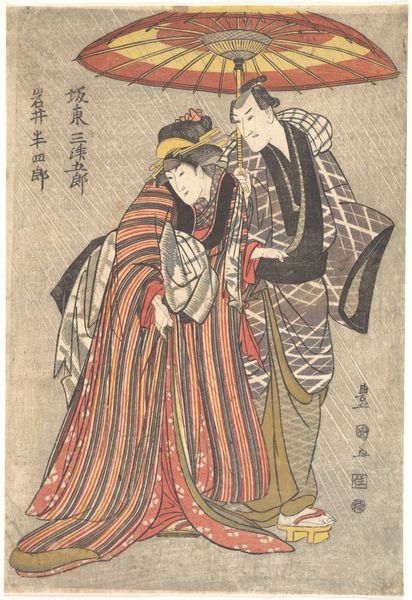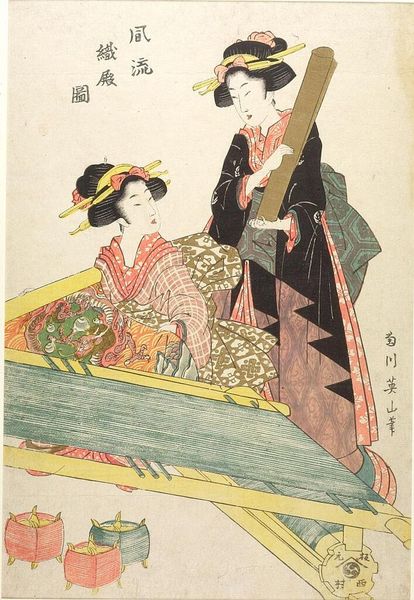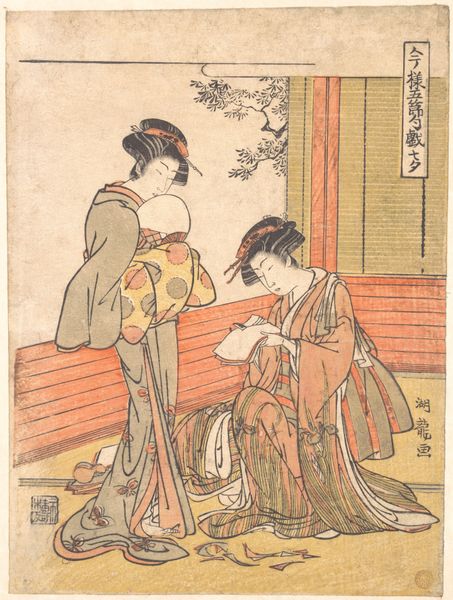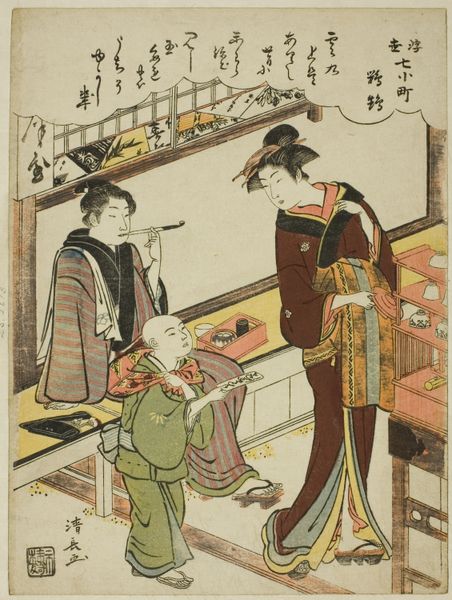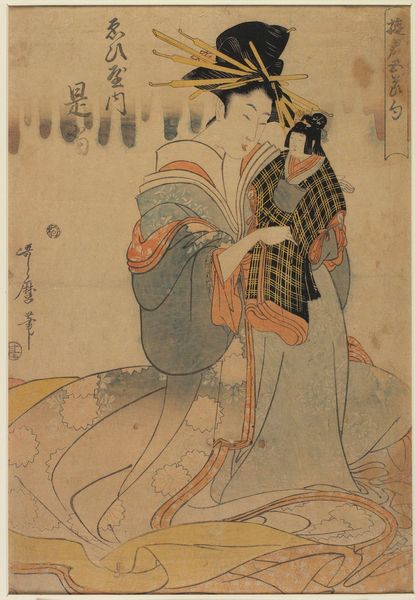
Kneeling actor and standing beauty holding a tray of clothes, from the series "Fuji in Summer Matched with Beautiful Women (Natsu no Fuji bijin awase)" 1801
0:00
0:00
print, woodblock-print
#
portrait
# print
#
asian-art
#
ukiyo-e
#
figuration
#
woodblock-print
Dimensions: 14 1/2 × 10 in.
Copyright: Public Domain
Curator: This vibrant woodblock print, dating to 1801, is titled "Kneeling actor and standing beauty holding a tray of clothes, from the series "Fuji in Summer Matched with Beautiful Women" and it's by Utagawa Toyokuni I. It now resides here at The Art Institute of Chicago. What strikes you first about it? Editor: The colors. It's arresting. The bright green against that muted plum and the slightly unnerving supplicant gaze. It's visually quite complex, despite the simplicity of the composition. Curator: I find it fascinating to consider the context of Ukiyo-e prints during this period. They weren't simply aesthetic objects, were they? Think about the rapidly changing social structures and the rising merchant class seeking entertainment and a reflection of their world. Editor: Precisely. This print is woodblock, of course—a mass-reproducible medium, connecting directly to burgeoning consumer culture and accessible entertainment. Look at the detail in the robes, presumably quite fine material depicted for a wider audience. We should acknowledge the artisans whose skilled labor contributed to this work, too. Curator: Absolutely. The kneeling figure, an actor, brings in themes of performance and identity. His posture signals a particular power dynamic—or maybe hints at subversive undercurrents questioning social norms through artistic expression. Editor: I see what you mean. And consider the tools and supplies in the tray. These would be commodities, produced and consumed. It creates an interesting parallel with how the print itself circulates as a consumer good. Curator: Thinking about the “beautiful woman,” we could explore ideals of beauty at the time. Her role isn’t just decorative; it intertwines with aspirations, marketing, and cultural expectations related to the feminine. Editor: Yes, and it's not just about individual beauty; the artist is staging and directing labor through visual representations. That beautiful woman, seemingly detached from the labor, still participates. Curator: Considering the work as a material object opens it to economic and production contexts—which ultimately influences subject and representation. Editor: Right. Thinking beyond high art is crucial. Curator: I will definitely consider what this image conveys about identity. Editor: Thanks to labor and access to tools.
Comments
No comments
Be the first to comment and join the conversation on the ultimate creative platform.
